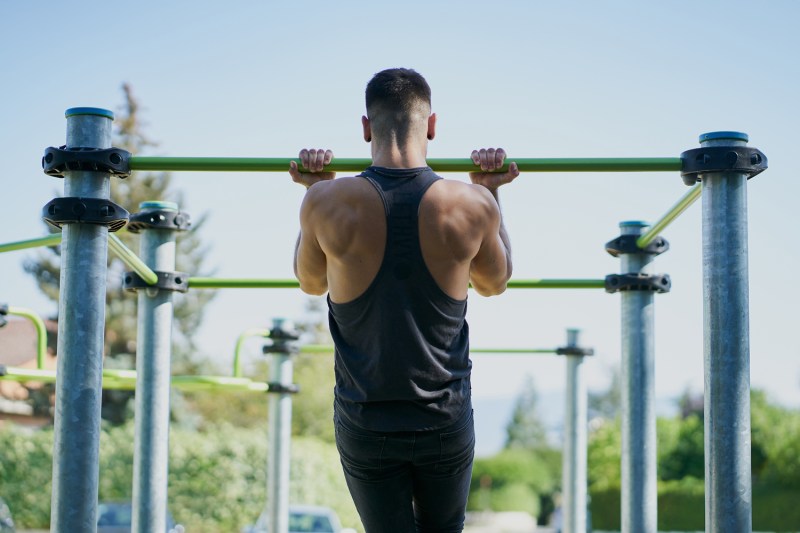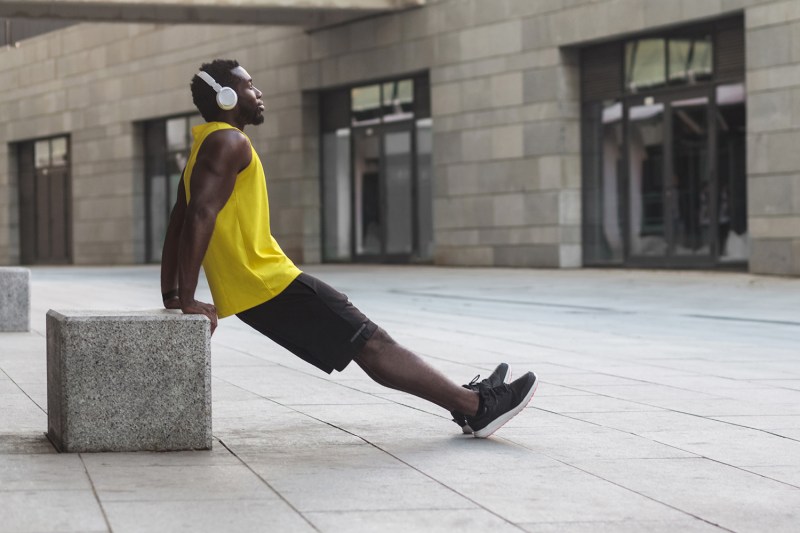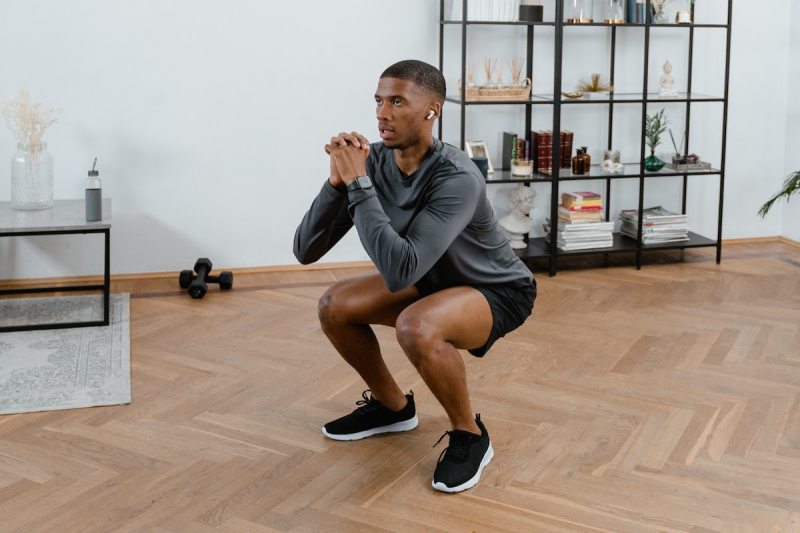
If you’re looking for a workout routine that doesn’t require expensive equipment or a gym membership, then calisthenics is a perfect choice. Calisthenics, also known as bodyweight training, is a type of exercise that uses your own body weight to build strength, endurance, and flexibility.
In this article, we’ll cover what calisthenics is, who it’s best for, and the benefits of including it in your workout routine. We’ll also provide a list of seven effective exercises you can incorporate into your calisthenics routine.
What is calisthenics?

Calisthenics is a form of exercise that uses your own body weight to build strength and fitness. It includes exercises such as push-ups, squats, and lunges, all of which require no equipment. Some other exercises require bars at various heights, but there are usually other simple tools you can use, like tree branches, chairs, and tables. Calisthenics can be done anywhere and at any time, making it a great option for those who don’t have access to a gym.
Who is calisthenics best for?

Calisthenics is a great workout option for anyone, regardless of their fitness level. Whether you’re a beginner or an advanced athlete, calisthenics exercises can be modified to suit your needs. Calisthenics for beginners can be confusing because there’s no equipment to give you instructions, but it’s really quick and easy to learn. It’s also a great option for those who are looking for a more low-impact workout that won’t put stress on their joints.
What are the benefits of calisthenics?

There are numerous benefits to including calisthenics in your workout routine. Here are just a few!
Builds strength
Calisthenics exercises target multiple muscle groups at once, which helps to build overall strength.
Improves flexibility
Many calisthenics exercises require a full range of motion, which can help to improve flexibility. Make sure to include stretches for added flexibility and for warmup/cooldown.
Increases endurance
Calisthenics exercises often involve high reps and short rest periods, which can improve your endurance.
7 Effective exercises for your routine

1. Pull-ups
Pull-ups are one of the most effective exercises for building upper body strength. They target the back, biceps, and shoulders.
Instructions:
- Start by hanging from a pull-up bar with your palms facing away from you and your hands shoulder-width apart.
- Engage your back muscles and pull your body up towards the bar, bringing your chin above the bar.
- Lower your body back down to the starting position, and repeat for multiple reps.
- If you’re a beginner, you can use a resistance band or have a partner assist you with the movement.
When performing pull-ups, it’s important to keep your core engaged and your shoulders pulled back and down. Avoid swinging your body or using momentum to complete the movement, as this can lead to injury and won’t be as effective for building strength.
Since the goal of a calisthenics workout is to be accessible to anyone without equipment, you can also use any vertical bar over your head for this exercise. Certain architectural elements may be useful, but the most accessible solution is likely a tree branch.
2. Dips
Dips are a great exercise for building triceps and chest strength. They can be done using parallel bars or even the edge of a bench or chair.
Instructions:
- Find parallel bars or two sturdy surfaces that are shoulder-width apart.
- Place your hands on the bars and lift your body up so your arms are straight.
- Keeping your elbows tucked in close to your body, lower your body down by bending your elbows until your shoulders are below your elbows.
- Push yourself back up to the starting position and repeat for multiple reps.
When performing dips, keep your shoulders pulled back and down, and keep your core engaged. Avoid swinging your body or flaring your elbows out to the sides, as this could possibly result in an injury.
3. Push-ups
Push ups are a classic calisthenics exercise that targets the chest, triceps, and shoulders.
Instructions:
- Start in a plank position with your hands shoulder-width apart and your feet together.
- Lower your body down toward the ground by bending your elbows while keeping your body in a straight line.
- Once your chest reaches the ground, push yourself back up to the starting position and repeat for multiple reps.
When performing push-ups, avoid letting your lower back sag or arching your upper back, as this won’t be as effective for building strength.
4. Hanging leg raises
Hanging leg raises are a difficult yet effective exercise for targeting your abs and hip flexors.
Instructions:
- Hang from a pull-up bar with your hands shoulder-width apart and your palms facing away from you.
- Engage your core and lift your legs up towards the ceiling, keeping them straight.
- Lower your legs back down to the starting position and repeat for multiple reps.
When performing hanging leg raises, it’s important to avoid swinging your body or using momentum to complete the movement, as this decreases the effectiveness of the exercise.
5. Jump squats
Jump squats are a great exercise for building lower body strength and explosive power.
Instructions:
- Start in a squat position with your feet shoulder-width apart.
- Bend your knees to lower yourself down into a squat, then explosively jump up, reaching as high as you can.
- Land back in a squat position and repeat for multiple reps.
When performing jump squats, make sure to land softly and avoid letting your knees collapse inward or outward. Keep your core engaged and your chest up, and avoid letting your lower back curve. Jump squats can be more difficult than they look, so make sure you know how to do them correctly.
6. Inverted rows
Inverted rows are a great exercise for targeting your back, biceps, and core.
Instructions:
- Find a sturdy bar that is waist height.
- Lie underneath the bar, gripping it with your hands shoulder-width apart.
- Keeping your body straight and your core engaged, bend your elbows and pull your chest up to the bar before lowering yourself back down.
- Repeat for multiple reps.
7. Burpees
Burpees are a full-body exercise that targets multiple muscle groups.
Instructions:
- Start in a standing position, then squat down and place your hands on the ground.
- Kick your feet back into a plank position, then do a push up.
- Jump your feet back up to your hands, then explosively jump up into the air.
- Land back in a squat position, and repeat for multiple reps.
When performing burpees, avoid letting your lower back sag or arching your upper back during the push-up portion of the movement. Land softly after each jump, and don’t let your knees collapse inward or outward.



